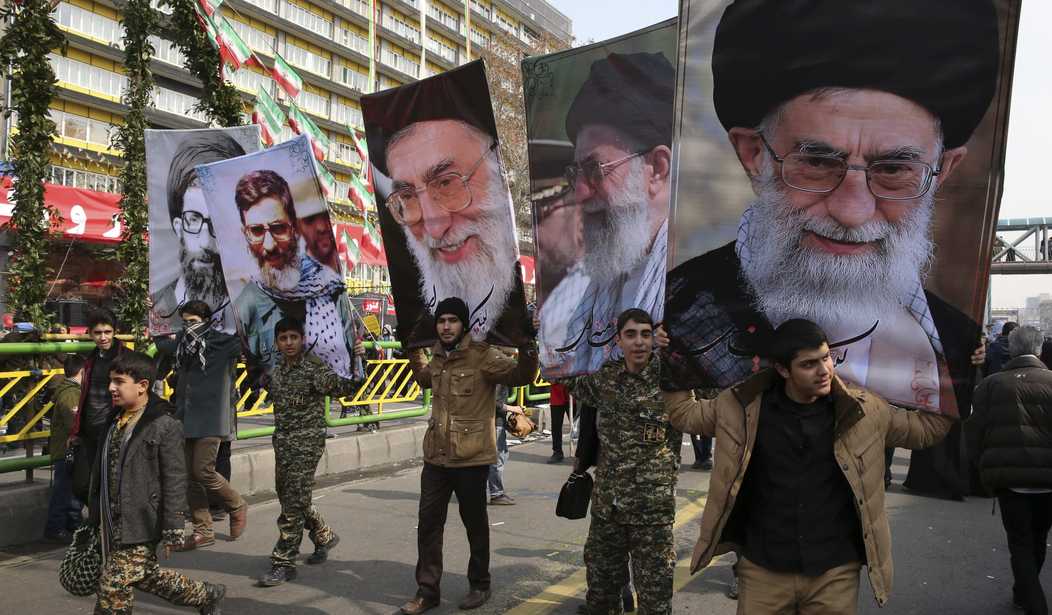It’s a good start. But it’s only that. The best part of the “new” Iran policy launched by the president is the crackdown on the Revolutionary Guards, incorporated in Treasury’s comprehensive sanctions. It remains to be seen if Iran’s trading partners—above all, Britain and Germany—will actively join, but it’s good news that the Trump administration is going after the Guards, which, as detailed in the president’s tough presentation, have served as the primary enforcement mechanism for the regime, whether against domestic opposition or foreign enemies, including us.
As the Washington Post said years ago, if you want an enduring solution to the Iran nuclear program, you must work for regime change in Tehran, and while Trump effectively laid out the rationale for such a policy, he did not call for it. Instead, he called for harsh measures against the regime, not its removal. He wants a new deal correcting the errors in the old agreement. A new round of sanctions, both in response to Iranian cheating on nukes and Iranian support of terrorism. Congress now has an opportunity to lay out new conditions.
The problem with this approach is that it gives more time to the Iranian regime. Under the existing system, the executive is required to certify that Iran is complying with the conditions of the deal. But Trump, after twice reluctantly going along with his advisors’ view that the world was better off with the deal in place, could not bring himself to certify Iran was in compliance with the deal a third time (nor could I). Good for him. He has focused our attention on the main problem, which is the behavior of the Iranian tyrants, from its murderous response to any citizen who challenges regime policies, to its ongoing war against the United States.
Apologists for the deal say we must choose between the deal, and war. But the war is ON. Listen to General Ismail Ghaani last August:
The deputy commander of Iran’s notorious Quds Force bragged at a recent ceremony that his operatives have killed more Americans than U.S. troops have killed Iranian fighters.
Brig. Gen. Ismail Ghaani was referring to Iran’s major intervention in the Iraq war to supply Shiite militias with supercharged explosives that could penetrate U.S. armored vehicles. The Pentagon has estimated the Quds Force, an arm of the Islamic Revolutionary Guard Corps, killed 500 Americans that way.
“Americans have suffered more losses from us then we have suffered losses from them,” Gen. Ghaani said, according to an article by Admad Majidyar, director of the Iran Observed Project at the Middle East Institute.
Doesn’t that sound like war to you? And that’s just in Iraq — the battlefield extends to Syria, Somalia, Lebanon and elsewhere, stretching to Central America.
The best strategy to win the war is political: support for the democratic Iranian opposition. Both Trump and Secretary of State Rex Tillerson have been at pains to stress our support for the Iranian people. Yet Tillerson noted that this was a strategy that would take time to work. Like the nuclear matter, they do not have anything like a quick fix.
This seems to me to be more like wishful thinking than a winning strategy. If Trump were serious about winning the war, he’d openly call for regime change. True, he openly and forcefully condemned the evils of the regime. But he did not take the next logical step and call for an end to the evil dictatorship, nor did he call for stepped-up action against Iranian forces in Syria and Iraq.
Sanctions are certainly useful, but they’re not nearly good enough, even if concentrated on the Revolutionary Guards. By now, the RG have learned many ways to beat sanctions, and the Europeans and the Chinese and the Russians are happy to play that game. And the most important potential sanction—drive down oil prices—for some reason doesn’t seem to be part of our economic arsenal, even though it seems we ought to get cooperation from the Saudies and the Gulfies.
So as I say, it’s a good start. But just that.









Join the conversation as a VIP Member